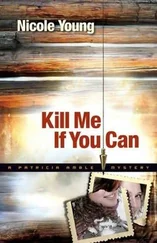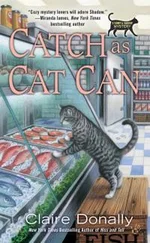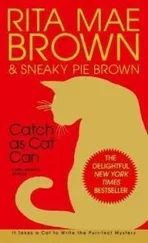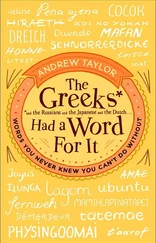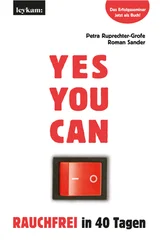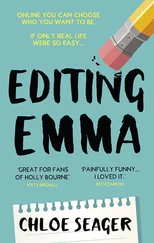I did get to Phoenix, but I made no effort to contact her. If I had, it wouldn’t have been to collect but to pay off, for Pixie let me into the mint.
The next day I sought out a stationery printing supply firm. “I’m thinking of starting a little stationery store and job printing shop,” I told a salesman.
“I’ve been advised that an I-Tek camera and a small offset press would probably meet my initial needs, and that good used equipment might prove just as feasible from an economic standpoint.”
The salesman nodded. “That’s true,” he agreed. “Trouble is, used I-Tek cameras are hard to come by. We don’t have one. We do have a fine little offset press that’s seen very limited service, and I’ll make you a good deal on the press if you take it along with a new I-Tek. Let you have both for $8,000.”
I was somewhat surprised by the price, but after he showed me the machines and demonstrated the operating procedure of both, I felt $8,000 was a paltry sum to invest in such gems. An I-Tek camera is simply a photoelectric engraver. It photographically produces an engraving of the original copy to be reproduced. The lightweight, flexible plate is then wrapped around the cylinder of an offset press, and the plate prints directly on the blanket of the press, which in turn offsets the image onto whatever paper stock is used. As Pixie said, anybody could do it with a little training, and I acquired my training on the spot.
The I-Tek camera and the small press, while not overly heavy, were large and bulky, not objects to be carted around the country as part of one’s luggage. But I planned only a limited ownership of the machines.
I located a warehouse storage firm and rented a well-lighted cubicle for a month, paying in advance. I then obtained a cashier’s check for $8,000 and bought the I-Tek camera and the press and had them delivered to the storage room. The same day I made a round of stationery stores and purchased all the supplies I needed-a drawing board, pens and pencils, rulers, a paper cutter, press-on letters and numerals, a quantity of safety paper in both blue and green card stock of the type used for the real expense checks and other items.
The next day I closeted myself in my makeshift workshop and, using the various materials, created a 16-by-24-inch facsimile of the sham Pan Am expense check I’d been reproducing by hand. Finished, I positioned my artwork under the camera, set the reduction scale for a 2›V2-by-7V2- inch engraving and pushed the button. Within minutes I was fitting the plate around the drum of the press and printing sample copies of my invention.
I was astonished and delighted. The camera reduction had taken away any infractions and discrepancies in lines and lettering as far as the naked eye could discern. Using the paper cutter, I sliced one from the card stock and examined it. Save for the four smooth edges, I might have been holding a genuine check!
I ran off five hundred of the counterfeit checks before shutting down the little press and abandoning both it and the I-Tek camera. I went back to my hotel room, donned my pilot’s uniform, stuck a packet of the checks in my coat and went out to buck the tiger.
The tiger, for me, was a pussy cat. I ironed out Vegas like a bed sheet. That afternoon and night, and the following day, I hit nearly a hundred casinos, bars, hotels, motels, night clubs and other gambling spots, and in Vegas almost any place you walk into offers some kind of action. There’re slot machines in the grocery stores. No cashier showed the slightest hesitation about cashing one of my phony checks. “Would you cash this and give me $50 in chips?” I’d ask, and promptly I’d be handed $50 in markers and the balance in cash. For appearance’s sake, I’d usually stay in a casino for twenty or thirty minutes, playing the tables, before hitting the next place, and much to my amusement I whacked out the casinos that way too.
I came out $300 ahead playing the slots. I won $1,600 playing blackjack. Without the slightest inkling of the game, I picked up $900 playing roulette, and I won $2,100 at the dice tables. In all, I murdered Vegas for $39,000! I left Nevada driving a rented Cadillac, although I had to put up a $1,000 deposit when I told the lessor I’d probably be using the car several weeks.
I had it for nearly three months, as a matter of fact. I made a leisurely, meandering tour of the Northwest and Midwest, maintaining the pose of an airline pilot on vacation and alternating in the role of Frank Williams and Frank Adams. Since I didn’t want to leave the hounds a trail that could be too easily followed, I didn’t exactly scatter my counterfeits like confetti but I did stop to make a score now and then. I picked up $5,000 in Salt Lake City, $2,000 in Billings, $4,000 in Cheyenne and I bilked Kansas City banks for $18,000 before ending up in Chicago, where I simply parked the Cadillac and walked away.
I decided to hole up in Chicago for a while and give some serious thought to the future, or at least where I wanted to spend a great deal of the future. I was again entertaining the idea of fleeing the country. I wasn’t too concerned about my immediate security, but I knew that if I continued to operate in the U.S. it would be only a matter of time before I was nabbed. The principal problem I faced in trying to leave the country, of course, was obtaining a passport. I couldn’t apply for one in my own name since blabbing to Rosalie, and by now the authorities must have linked Frank Williams and Frank Adams to Frank Abagnale, Jr. I mulled the situation as I went about settling in Chicago, but as things turned out I didn’t have too much time for mulling.
I leased a nice apartment on Lakeshore Drive, using the name Frank Williams. I did so primarily because I was out of personalized checks and I always liked to have a supply in my possession. A lot of motels, I had learned, would not cash a company check but would accept a personal check in the amount of the bill or in cash amounts up to $100. I had forsaken personal checks as a means of swindling, but I still used them as a means of paying room rent when necessary. I didn’t like to lay out hard cash when I could slide one of my soft checks.
Accordingly, I dropped into a bank a week after alighting in Chicago and opened a checking account for $500. I identified myself as a Pan Am pilot, and gave as my address for the checks that of a mail service firm in New York to which I’d recently subscribed as another means of covering my trail. “But I want my checks and my monthly statements mailed to this address,” I instructed the bank officer who handled the transaction, giving him my Lake-shore Drive address.
“You see, the reason I want an account here is because I’m in and out of Chicago all the time on company business and it’s much more convenient to have an account in a local bank.”
The bank officer agreed. “You’ll receive your regular checks in about a week, Mr. Williams. In the meantime, here’re some temporary checks you can use,” he said.
Observation. A great asset for a con man, I’ve said. I had observed a very lovely teller when I entered the bank. Her image remained in my mind after I left the bank, and when she persisted in my thoughts over the next few days I determined to meet her. I returned to the bank several days later on the pretext of making a deposit and was filling out a deposit slip I had taken from a counter in the middle of the lobby when an even higher power of observation took command of my mind.
In the lower left-hand corner of the deposit slip was a rectangular box for the depositor’s account number. I never filled in the box, for I knew it wasn’t required. When a teller put a deposit slip in the small machine in his or her cage, in order to furnish you with a stamped receipt, the machine was programed to read the account number first. If the number was there, the amount of the deposit was automatically credited to the account holder. But if the number wasn’t there, the account could still be credited using the name and address, so the number wasn’t necessary.
Читать дальше

